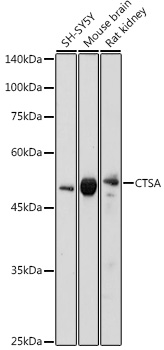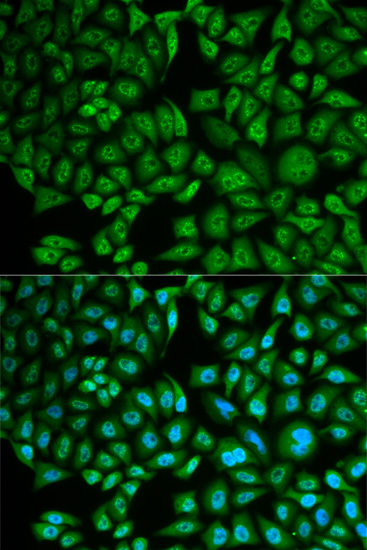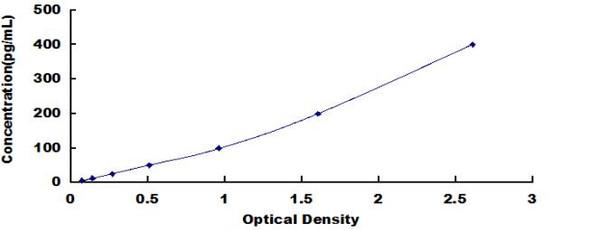Cell Biology Antibodies 9
Anti-CTSA Antibody (CAB5503)
- SKU:
- CAB5503
- Product Type:
- Antibody
- Reactivity:
- Human
- Reactivity:
- Mouse
- Reactivity:
- Rat
- Host Species:
- Rabbit
- Isotype:
- IgG
- Antibody Type:
- Polyclonal Antibody
- Research Area:
- Cell Biology
Description
| Antibody Name: | Anti-CTSA Antibody |
| Antibody SKU: | CAB5503 |
| Antibody Size: | 20uL, 50uL, 100uL |
| Application: | WB IF |
| Reactivity: | Human, Mouse, Rat |
| Host Species: | Rabbit |
| Immunogen: | Recombinant fusion protein containing a sequence corresponding to amino acids 210-450 of human CTSA (NP_001121167.1). |
| Application: | WB IF |
| Recommended Dilution: | WB 1:500 - 1:2000 IF 1:20 - 1:50 |
| Reactivity: | Human, Mouse, Rat |
| Positive Samples: | SH-SY5Y, Mouse brain, Rat kidney |
| Immunogen: | Recombinant fusion protein containing a sequence corresponding to amino acids 210-450 of human CTSA (NP_001121167.1). |
| Purification Method: | Affinity purification |
| Storage Buffer: | Store at -20'C. Avoid freeze / thaw cycles. Buffer: PBS with 0.02% sodium azide, 50% glycerol, pH7.3. |
| Isotype: | IgG |
| Sequence: | SYEQ NDNS LVYF AYYH GLLG NRLW SSLQ THCC SQNK CNFY DNKD LECV TNLQ EVAR IVGN SGLN IYNL YAPC AGGV PSHF RYEK DTVV VQDL GNIF TRLP LKRM WHQA LLRS GDKV RMDP PCTN TTAA STYL NNPY VRKA LNIP EQLP QWDM CNFL VNLQ YRRL YRSM NSQY LKLL SSQK YQIL LYNG DVDM ACNF MGDE WFVD SLNQ KMEV QRRP WLVK YGDS GEQI AGFV KEFS HIAF L |
| Gene ID: | 5476 |
| Uniprot: | P10619 |
| Cellular Location: | Lysosome |
| Calculated MW: | 52kDa/54kDa |
| Observed MW: | 54KDa |
| Synonyms: | CTSA, GLB2, GSL, NGBE, PPCA, PPGB |
| Background: | This gene encodes a member of the peptidase S10 family of serine carboxypeptidases. Alternative splicing results in multiple transcript variants, at least one of which encodes a preproprotein that is proteolytically processed to generate two chains that comprise the heterodimeric active enzyme. This enzyme possesses deamidase, esterase and carboxypeptidase activities and acts as a scaffold in the lysosomal multienzyme complex. Mutations in this gene are associated with galactosialidosis. |
| UniProt Protein Function: | CTSA: Protective protein appears to be essential for both the activity of beta-galactosidase and neuraminidase, it associates with these enzymes and exerts a protective function necessary for their stability and activity. This protein is also a carboxypeptidase and can deamidate tachykinins. Defects in CTSA are the cause of galactosialidosis (GSL). A lysosomal storage disease associated with a combined deficiency of beta-galactosidase and neuraminidase, secondary to a defect in cathepsin A. All patients have clinical manifestations typical of a lysosomal disorder, such as coarse facies, cherry red spots, vertebral changes, foam cells in the bone marrow, and vacuolated lymphocytes. Three phenotypic subtypes are recognized. The early infantile form is associated with fetal hydrops, edema, ascites, visceromegaly, skeletal dysplasia, and early death. The late infantile type is characterized by hepatosplenomegaly, growth retardation, cardiac involvement, and a normal or mildly affected mental state. The juvenile/adult form is characterized by myoclonus, ataxia, angiokeratoma, mental retardation, neurologic deterioration, absence of visceromegaly, and long survival. Belongs to the peptidase S10 family. |
| UniProt Protein Details: | Protein type:Mitochondrial; EC 3.4.16.5; Protease; Endoplasmic reticulum Chromosomal Location of Human Ortholog: 20q13.1 Cellular Component: nucleoplasm; lysosomal lumen; intracellular membrane-bound organelle; membrane; lysosome; endoplasmic reticulum Molecular Function:serine carboxypeptidase activity; carboxypeptidase activity; enzyme activator activity Biological Process: positive regulation of catalytic activity; intracellular protein transport; cellular protein metabolic process; sphingolipid metabolic process; dolichol-linked oligosaccharide biosynthetic process; glycosphingolipid metabolic process; protein amino acid N-linked glycosylation via asparagine; post-translational protein modification; proteolysis Disease: Galactosialidosis |
| NCBI Summary: | This gene encodes a glycoprotein which associates with lysosomal enzymes beta-galactosidase and neuraminidase to form a complex of high molecular weight multimers. The formation of this complex provides a protective role for stability and activity. Deficiencies in this gene are linked to multiple forms of galactosialidosis. Alternatively spliced transcript variants encoding different isoforms have been found for this gene. [provided by RefSeq, Jul 2008] |
| UniProt Code: | P10619 |
| NCBI GenInfo Identifier: | 20178316 |
| NCBI Gene ID: | 5476 |
| NCBI Accession: | P10619.2 |
| UniProt Secondary Accession: | P10619,Q561W6, Q5JZH1, Q96KJ2, Q9BR08, Q9BW68, B2R798 |
| UniProt Related Accession: | P10619 |
| Molecular Weight: | 480 |
| NCBI Full Name: | Lysosomal protective protein |
| NCBI Synonym Full Names: | cathepsin A |
| NCBI Official Symbol: | CTSA |
| NCBI Official Synonym Symbols: | GSL; GLB2; NGBE; PPCA; PPGB |
| NCBI Protein Information: | lysosomal protective protein; deamidase; urinary kininase; carboxypeptidase C; carboxypeptidase L; carboxypeptidase-L; beta-galactosidase 2; lysosomal carboxypeptidase A; protective protein cathepsin A; carboxypeptidase Y-like kininase; beta-galactosidase protective protein |
| UniProt Protein Name: | Lysosomal protective protein |
| UniProt Synonym Protein Names: | Carboxypeptidase C; Carboxypeptidase L; Cathepsin A; Protective protein cathepsin A; PPCA; Protective protein for beta-galactosidaseCleaved into the following 2 chains:Lysosomal protective protein 32 kDa chain; Lysosomal protective protein 20 kDa chain |
| Protein Family: | Lysosomal protective protein |
| UniProt Gene Name: | CTSA |
| UniProt Entry Name: | PPGB_HUMAN |
View AllClose








